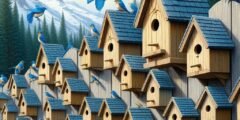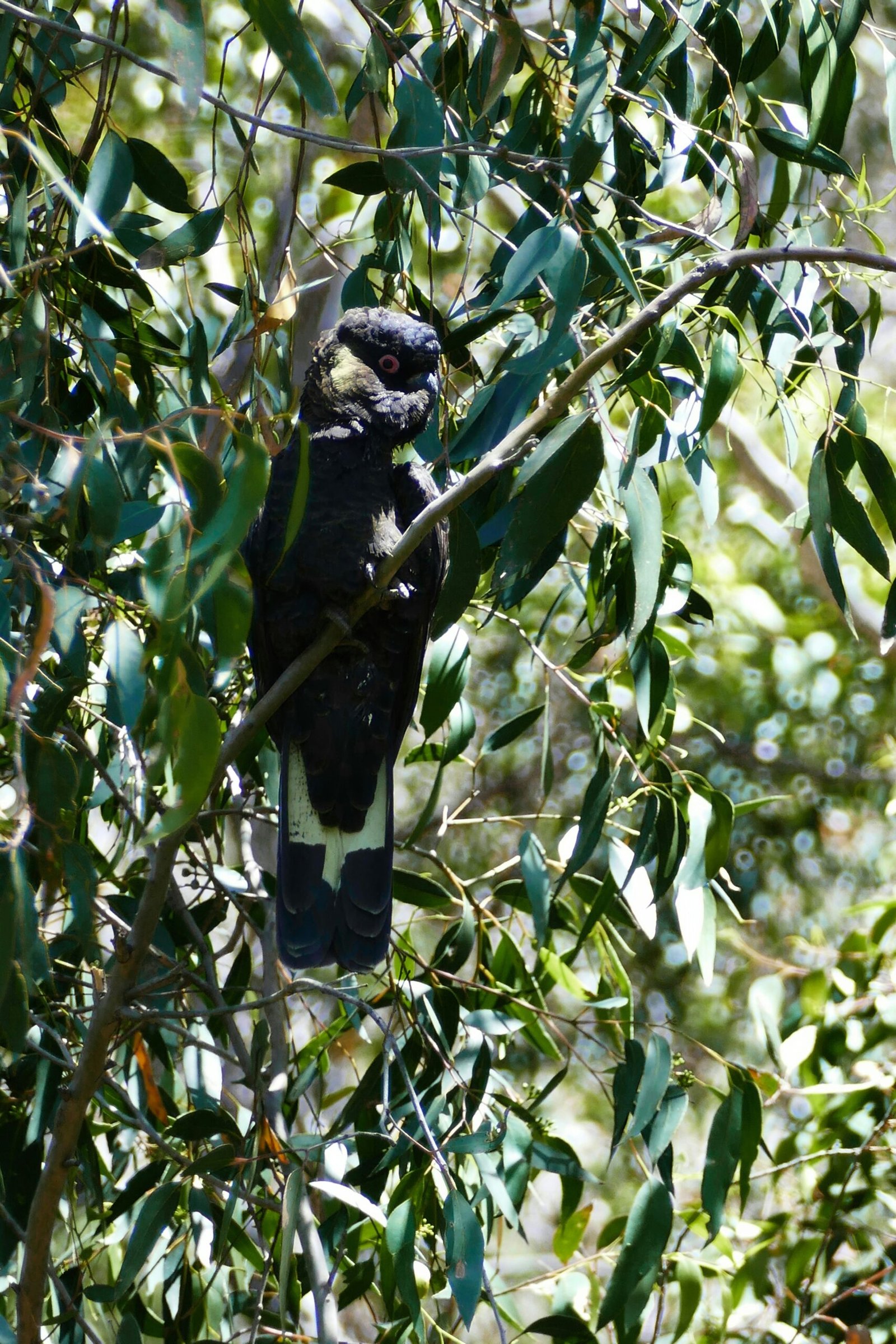The importance of proper dimensions for a bluebird house cannot be overstated. Ensuring that a bluebird house is built with the ideal internal dimensions is crucial for attracting these charming birds while providing them with a safe and comfortable nesting environment. Bluebirds, known for their vibrant plumage and melodious songs, are particular about their nesting sites. Therefore, understanding and implementing the correct dimensions for a bluebird house is essential for anyone looking to encourage these birds to take up residence in their backyard.
This blog post aims to guide readers through the recommended internal dimensions for bluebird houses, emphasizing how these measurements can impact the attractiveness and functionality of the nesting box. We will delve into the specific needs of different types of bluebirds—including Eastern Bluebirds, Western Bluebirds, and Mountain Bluebirds—and how these needs influence the design of their houses. By highlighting the ideal length, width, and height for bluebird houses, this post will equip you with the knowledge necessary to create a welcoming habitat for these beautiful birds.
Readers can expect to learn about the standard measurements that cater to bluebirds’ nesting preferences, as well as the rationale behind these dimensions. Additionally, insights into the materials and construction techniques that best support the structural integrity and longevity of bluebird houses will be provided. Whether you are a seasoned bird enthusiast or a newcomer to birdwatching, this comprehensive guide will offer valuable information to enhance your efforts in bluebird conservation.
Ultimately, the goal is to foster an environment where bluebirds can thrive, contributing to the biodiversity and ecological balance of your local area. With the right dimensions and thoughtful construction, a bluebird house can become a pivotal element in supporting these delightful creatures. Let’s explore how to create the perfect home for bluebirds, ensuring their safety, comfort, and continued presence in our natural world.
Is There a Difference in Size Requirements for Eastern vs. Western Bluebird Houses?
When constructing bluebird houses, it’s crucial to consider the specific size requirements for Eastern and Western Bluebirds. Although both species share similar nesting behaviors, subtle differences in their preferred house dimensions can significantly impact their habitation success.
For Eastern Bluebirds, optimal internal dimensions typically include a floor area of 4 inches by 4 inches and a height of 9 inches from the floor to the roof. The entrance hole should be 1.5 inches in diameter, positioned 6 to 7 inches above the floor. These measurements cater to the Eastern Bluebird’s nesting needs, providing ample space for both the adult birds and their offspring.
In contrast, Western Bluebirds prefer slightly different dimensions. Their ideal house should have a floor area of 5 inches by 5 inches and a height of 8 inches. The entrance hole for Western Bluebirds is typically the same diameter of 1.5 inches but is often positioned around 7 to 8 inches above the floor to accommodate their nesting habits. The slight increase in floor area offers additional space, which is beneficial in regions where Western Bluebirds are more prevalent.
Studies have shown that these variations in dimensions can influence the birds’ nesting success and overall comfort. According to research published by the North American Bluebird Society, properly sized birdhouses increase occupancy rates and reduce predation risks. Expert opinions, including those from ornithologists and birdhouse designers, also emphasize the importance of adhering to these specific dimensions to support bluebird conservation efforts.
For further reading on the subject, you may refer to the comprehensive guide provided by the North American Bluebird Society here. Additionally, a study from the Cornell Lab of Ornithology offers valuable insights into regional differences in bluebird house specifications, which can be accessed here.
Can a Bluebird House Be Too Big, and If So, What Are the Potential Drawbacks?
Building a bluebird house with dimensions that exceed the optimal size can have several unintended consequences. One of the primary concerns is the increased risk of attracting predators. Larger birdhouses provide more space, making it easier for predators such as raccoons and snakes to access the nest. This increased vulnerability can lead to higher mortality rates among bluebird chicks. According to experts from the North American Bluebird Society, maintaining the correct internal dimensions is crucial for ensuring the safety of the birds.
Another significant drawback of an oversized bluebird house is the difficulty in maintaining the appropriate nest temperature. Bluebirds rely on a snug and confined space to keep their eggs and chicks warm. A larger house can result in uneven temperature distribution, making it harder for the parent birds to regulate warmth. This can adversely affect the development of the chicks, potentially leading to slower growth rates and higher susceptibility to illnesses. Research has shown that maintaining the ideal internal dimensions helps in preserving the necessary thermal environment for bluebird nests.
Furthermore, nurturing young bluebirds in an oversized house can present additional challenges. Bluebird parents need to efficiently feed and care for their offspring, and a larger space can complicate their efforts. The increased distance within the house may make it harder for the parents to reach all the chicks promptly, potentially leading to malnutrition or uneven growth among the young birds. According to a study published by the Cornell Lab of Ornithology, the optimal dimensions for a bluebird house ensure that the parents can adequately care for their young without unnecessary complications.
For those interested in learning more about the specific risks associated with oversized birdhouses, reputable resources such as the NestWatch program by the Cornell Lab of Ornithology provide extensive information and expert recommendations. By adhering to the recommended dimensions, bird enthusiasts can create an environment that maximizes the safety and well-being of bluebirds, ensuring their successful breeding and growth.
How Important Is the Space Between the Entrance Hole and the Floor of the Bluebird House?
The distance between the entrance hole and the floor of a bluebird house is a critical factor in ensuring the safety and accessibility of these avian homes. This measurement plays a pivotal role in protecting nestlings from potential threats and environmental challenges. Experts recommend a distance of at least 6 inches from the bottom of the entrance hole to the floor of the birdhouse. This spacing is not arbitrary; it is based on extensive observations and studies of bluebird nesting habits and predator behaviors.
One of the primary reasons for maintaining this distance is to safeguard nestlings from predators. Bluebirds are often targeted by larger birds, snakes, and mammals that can easily access low-lying nests. By positioning the entrance hole higher, it becomes significantly harder for these predators to reach the nestlings, providing a natural form of protection. Moreover, the height difference acts as a deterrent, reducing the likelihood of predation and increasing the chances of fledgling survival.
In addition to predator protection, the height of the entrance hole relative to the floor aids in shielding the nest from adverse weather conditions. Rainwater and strong winds are less likely to penetrate deeply into the birdhouse when the entrance is elevated. This positioning helps to keep the nest dry and warm, creating a more stable and conducive environment for the growth and development of the young bluebirds. Ensuring that the entrance hole is appropriately distanced from the floor also facilitates better air circulation within the birdhouse, which is essential for maintaining a healthy nesting environment.
For individuals interested in building effective bluebird houses, it is advisable to follow bluebird conservation guidelines and expert recommendations. Resources such as the North American Bluebird Society offer comprehensive advice on the optimal dimensions and designs for bluebird houses. By adhering to these guidelines, bird enthusiasts can significantly contribute to the conservation efforts of these beautiful songbirds.
What Kind of Material Should Be Used for the Floor of a Bluebird House?
When constructing a bluebird house, selecting the appropriate material for the floor is critical for the health and safety of the birds. One of the most recommended materials for this purpose is untreated wood. Untreated wood is favored primarily because it provides excellent insulation, which helps maintain a stable internal temperature, crucial for the eggs and chicks during varying weather conditions. Additionally, untreated wood is non-toxic and does not expose the bluebirds to harmful chemicals.
Another advantage of using untreated wood is its natural texture, which offers a better grip for fledglings learning to navigate their new environment. However, it’s essential to ensure the wood is durable and resistant to decay, as moisture and weather exposure can weaken the structure over time. Cedar and pine are excellent choices due to their natural resistance to rot and insect damage.
Alternatives to untreated wood include materials like plywood and metal. Plywood can be a cost-effective option, but it often contains adhesives and chemicals that can be harmful to birds. Furthermore, plywood does not insulate as effectively as solid wood, making it less ideal for maintaining a stable temperature. Metal, on the other hand, is highly durable and resistant to weather conditions but poses significant risks. Metal surfaces can become excessively hot or cold, leading to temperature extremes that can be detrimental to the bluebirds.
Ultimately, the primary consideration should be the safety and comfort of the bluebirds. The floor material should provide adequate insulation, be non-toxic, and offer structural integrity. Expert sources, such as the North American Bluebird Society, recommend untreated wood as the optimal choice for these reasons. For more detailed guidelines on constructing birdhouse floors, you can refer to their official website.
Do Bluebirds Need Any Perches Near the Entrance Hole of Their House?
When designing or purchasing a bluebird house, one might wonder if perches near the entrance hole are necessary or beneficial. In fact, expert opinions and research findings suggest that perches can be more detrimental than advantageous for bluebird houses.
One of the primary concerns with adding perches is that they can attract predators. Species such as squirrels, raccoons, and cats may use the perch as a foothold to reach the nest, posing a significant threat to the bluebirds and their eggs. Additionally, certain birds like house sparrows and European starlings, which are known to be aggressive, can also use perches to invade bluebird houses, often leading to the displacement or harm of the native bluebirds.
Moreover, studies have shown that bluebirds do not require perches to access their nests. Bluebirds are adept at clinging to the entrance hole and entering directly without the need for an additional foothold. In fact, the absence of a perch can make it more challenging for unwanted species to enter the nest, thus providing bluebirds with a safer environment. According to the North American Bluebird Society, the best bluebird house designs are those that do not include perches.
However, there are some who argue that perches might provide a convenient place for adult bluebirds to rest and survey their territory. Despite this, the potential risks usually outweigh the benefits. For those interested in creating an optimal nesting environment, it is generally recommended to avoid adding perches altogether.
For further detailed advice on the design elements of bluebird houses, including optimal dimensions and additional features, resources such as the North American Bluebird Society’s guidelines and publications are invaluable. These sources offer comprehensive insights to ensure that bluebird houses not only attract these delightful birds but also provide them with a secure and conducive nesting habitat.
Should I Put Any Nesting Material Inside the Bluebird House Before the Birds Arrive?
When preparing a bluebird house, the question of whether to add nesting material beforehand often arises. Generally, it is not necessary to place nesting material inside the bluebird house before the birds arrive. Bluebirds are naturally inclined to gather their own materials to build their nests, and pre-placing materials may sometimes deter them from using the house.
There are several benefits to allowing bluebirds to gather their own nesting materials. Firstly, it enables the birds to select materials that meet their specific preferences and needs. Bluebirds typically use grasses, pine needles, and other natural fibers found in their habitat. By gathering these materials themselves, they ensure the nest is constructed to their liking and is suitable for the local climate conditions. Furthermore, the act of collecting nesting materials is a vital part of the bluebird’s natural behavior and breeding process.
However, some bird enthusiasts suggest that placing a minimal amount of appropriate nesting material can encourage bluebirds to inspect and potentially use the house. If you choose to do so, ensure that the materials are natural, clean, and free from chemicals. Suitable options include dried grasses, pine needles, and small twigs. Avoid using synthetic materials or those that can easily retain moisture, as these can create an unhealthy environment for the birds.
Expert recommendations, such as those from the North American Bluebird Society, support the practice of allowing bluebirds to build their own nests. They emphasize the importance of providing a safe and clean environment, rather than pre-filling the house with nesting materials. For more detailed guidelines and insights on bluebird house preparations, refer to resources such as the North American Bluebird Society’s website and local bird conservation organizations.
How Often Do Bluebirds Raise Young in a Single Nesting Season?
Bluebirds are known for their vibrant plumage and melodic songs, but their breeding habits are equally fascinating. Typically, bluebirds raise multiple broods in a single nesting season, which generally spans from March to August. The number of broods can vary depending on several factors, including climate, geographic location, and food availability.
In regions with milder climates, bluebirds may raise up to three broods per season. Conversely, in areas with harsher climatic conditions, they may only produce one or two broods. The availability of food is a critical factor influencing their reproductive cycles. A plentiful supply of insects and berries, which constitute a significant portion of their diet, can enable bluebirds to raise more broods. Conversely, a scarcity of food resources can limit their breeding success.
Research indicates that the first brood of the season typically hatches in late April or early May. After fledging, the parents usually take a short break before initiating the next breeding cycle. This interval allows the parents to recuperate and prepare for the subsequent brood. The second brood generally arrives in June or early July, and if conditions are favorable, a third brood may follow in late July or early August.
Studies conducted by ornithologists have shown that bluebirds exhibit a high degree of parental care, with both the male and female participating in feeding and protecting the young. This cooperative behavior not only increases the survival rate of the chicks but also enables the parents to undertake multiple breeding cycles within a single season.
For further insights into bluebird breeding behaviors, authoritative sources such as the North American Bluebird Society provide extensive data and research findings. Understanding these patterns can help in the conservation efforts aimed at supporting bluebird populations, ensuring that these delightful birds continue to thrive in their natural habitats.
Once the Bluebirds Have Fledged, Can I Reuse the House for Another Brood in the Same Season?
Reusing a bluebird house within the same breeding season is not only possible but also encouraged. Bluebirds often raise multiple broods in a single season, and a well-maintained bluebird house can significantly improve their chances of success. However, certain steps must be taken to ensure that the house remains a safe and inviting environment for new broods.
Immediately after the fledglings have left the nest, it’s crucial to clean the bluebird house thoroughly. Begin by removing the old nest material to prevent the buildup of parasites and diseases that could harm the new brood. Use a brush to scrub the interior and, if necessary, a mild bleach solution (one part bleach to nine parts water) to disinfect the surfaces. Rinse the house well with water and allow it to dry completely before reassembling it.
Once the house is clean and dry, inspect it for any signs of wear or damage. Repair any cracks or holes that could allow predators or adverse weather conditions to harm the birds. Ensure that the entrance hole is clear and that the ventilation and drainage systems are functioning properly. Adding a fresh layer of dry grass or pine needles to the floor can create a more inviting nesting environment for the next brood.
Experts recommend monitoring the house closely after it has been prepared for reuse. Bluebird parents will often begin the process of nest-building within days of the previous brood’s departure. Providing a nearby source of food and water can also encourage bluebirds to return to the house.
For additional tips and best practices on maintaining birdhouses for multiple uses, refer to resources such as the North American Bluebird Society’s guidelines or consult local bird-watching groups. Proper maintenance and timely cleaning can make a significant difference in the success of bluebird populations in your area.
What Other Types of Birds Might Use a Bluebird House, Besides Bluebirds?
While bluebird houses are specifically designed to attract bluebirds, several other bird species might also find them appealing. These include tree swallows, chickadees, house wrens, and even some types of sparrows. Understanding the characteristics and nesting habits of these birds can help in either accommodating or deterring them, depending on your preferences.
Tree swallows, for example, are known for their aerial acrobatics and iridescent feathers. They often compete with bluebirds for nesting sites and might use a bluebird house if available. To accommodate both species, consider placing multiple birdhouses in your yard, spaced at least 100 feet apart to reduce competition.
Chickadees, with their distinctive black caps and white cheeks, are another potential occupant. These small birds are less aggressive than tree swallows and can coexist more harmoniously with bluebirds. Chickadees prefer houses with a smaller entrance hole, around 1-1/8 inches in diameter, which can help deter larger, more aggressive birds.
House wrens are tiny but feisty birds that might take over bluebird houses, often removing the nests of other birds. To deter house wrens, it is recommended to place bluebird houses away from dense shrubs or wooded areas, as wrens prefer such environments.
Sparrows, particularly house sparrows, are considered invasive and can be highly aggressive towards bluebirds. They might take over bluebird houses, sometimes even killing bluebird nestlings. To deter house sparrows, it is advisable to monitor the birdhouse regularly and remove any sparrow nests promptly.
For more detailed information on these species and their nesting habits, you can explore resources such as the Audubon Society or the Cornell Lab of Ornithology. These sites offer comprehensive guides and studies on various bird species and their behaviors, helping you make informed decisions about managing your bluebird house.
FAQs
1. What are the ideal internal dimensions for a bluebird house?
The ideal internal dimensions for a bluebird house are generally 5 inches by 5 inches for the floor area, with a height of about 8 to 12 inches. These dimensions provide ample space for the bluebirds to nest and rear their young comfortably.
2. Why is the size of the entrance hole important?
The entrance hole size is crucial for maintaining the safety and suitability of the bluebird house. A diameter of 1.5 inches is optimal, as it allows bluebirds to enter while keeping larger, more aggressive birds out.
3. Can I adjust the dimensions of the bluebird house?
While you can make minor adjustments, it is recommended to adhere to standard dimensions to ensure the house is suitable for bluebirds. Deviating too much could make the house less attractive or even unusable for bluebirds.
4. How high should I mount the bluebird house?
Mount the bluebird house at a height of 4 to 6 feet above the ground. This height helps protect the nest from predators while making it accessible for bluebirds.
5. Where should I place the bluebird house?
Place the bluebird house in an open area with minimal tree cover and away from heavy human activity. Ideally, it should face away from prevailing winds to provide shelter and comfort.
6. How often should I clean the bluebird house?
Clean the bluebird house at least once a year, preferably in the fall after the breeding season. Regular cleaning helps prevent disease and parasite buildup.
7. Can I paint or stain the bluebird house?
Use only non-toxic, natural colors if you choose to paint or stain the bluebird house. Bright or unnatural colors can deter bluebirds from using the house.
For more detailed information on each aspect of bluebird house dimensions and usage, refer to the relevant sections of our blog post or visit external resources on bluebird conservation and housing standards.
Conclusion
In conclusion, selecting the ideal internal dimensions for a bluebird house is critical for attracting and protecting these beautiful creatures. Ensuring the length, width, and height of the birdhouse meet the specific needs of bluebirds can significantly increase the likelihood of these birds choosing your birdhouse as their nesting site. Proper dimensions not only provide a comfortable space for bluebirds to nest but also offer protection against predators and adverse weather conditions.
Throughout this blog post, we have discussed the recommended internal dimensions, which typically include a length and width of around 4-5 inches and a height of 9-12 inches. Adhering to these guidelines helps create an environment that is conducive to the nesting habits of bluebirds, providing them with ample space to build their nests and rear their young.
We encourage you to apply the knowledge gained from this post when constructing or purchasing a bluebird house. By doing so, you will be contributing to the conservation of bluebirds and enjoying the beauty they bring to your surroundings. For those interested in learning more, we have provided links to additional resources that offer deeper insights into bluebird conservation and habitat creation.
We invite you to share your experiences, ask questions, or provide feedback in the comments section below. Your input is invaluable and helps foster a community of bluebird enthusiasts dedicated to protecting and nurturing these charming birds. Together, we can make a significant impact on the well-being of bluebird populations.








